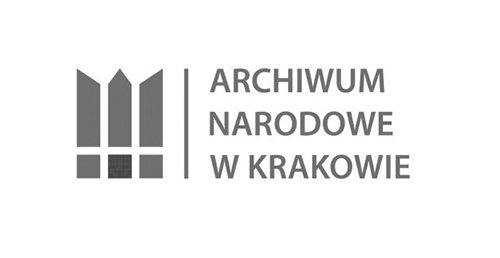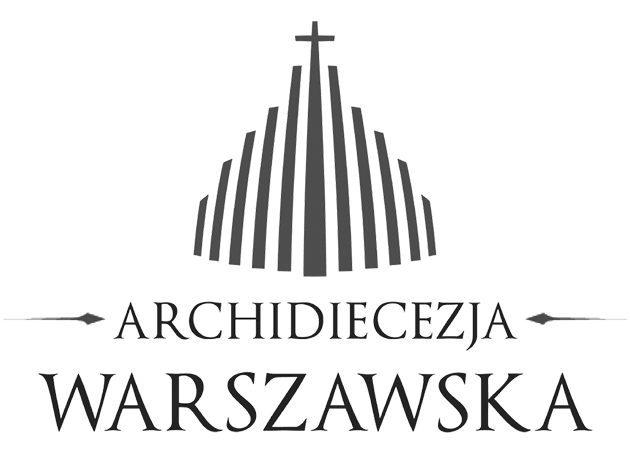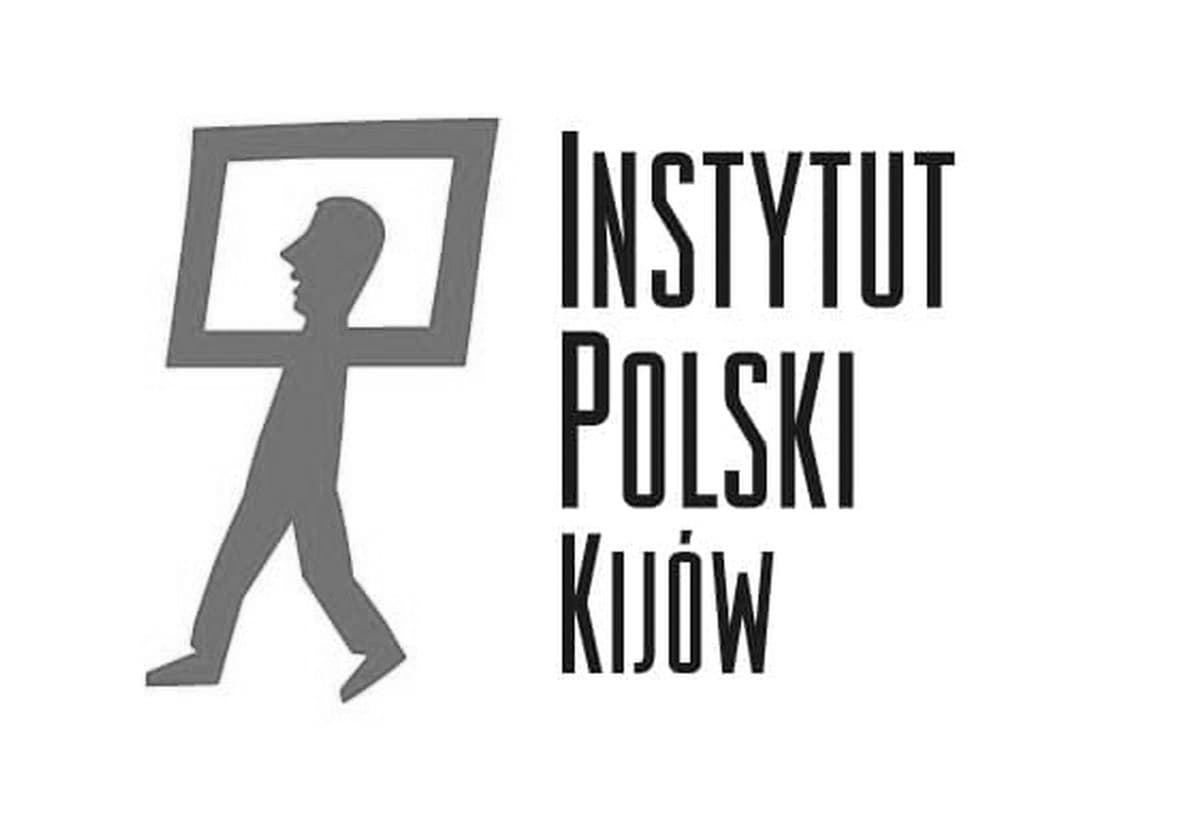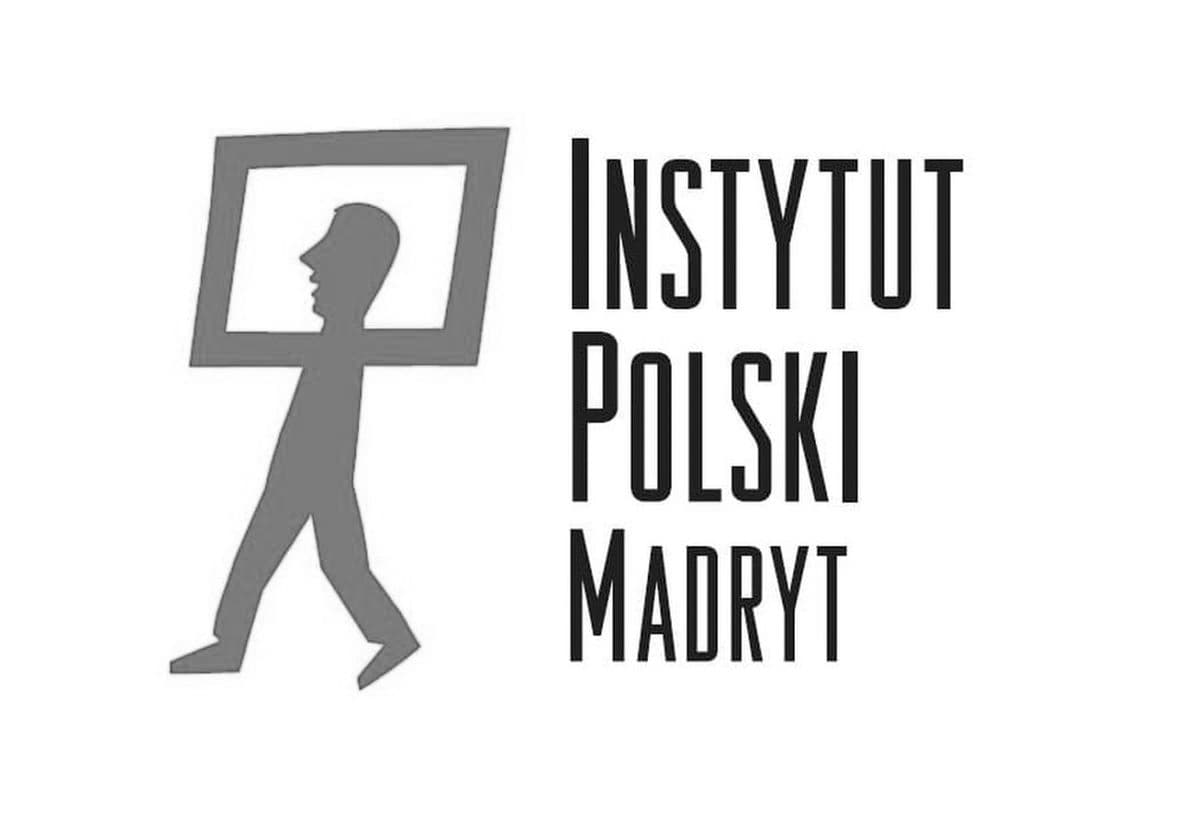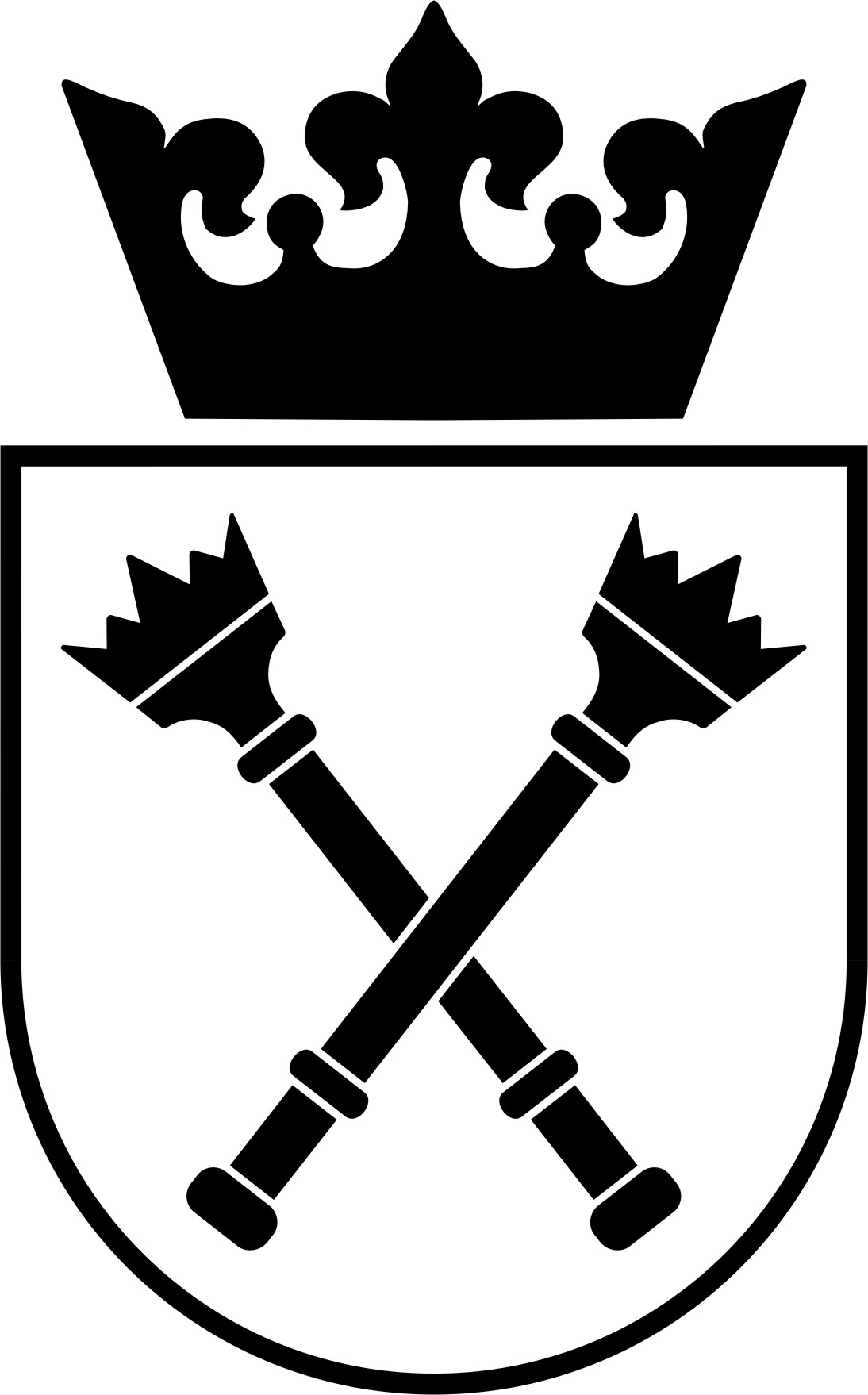Pope John Paul II and Paedophilia
Solidarity with the victims of paedophilia and respect for the truth demand an investigation into the allegations made publicly against Pope John Paul II concerning his failure to combat these crimes in the Church. In the following text, we present the source documents we have accessed and establish the basic factography.
Photo: Stanisław Składanowski
25 January 1983 — New Code of Canon Law
Promulgation of the Code of Canon Law by Pope John Paul II. The new Code replaced the previous Code of 1917. Work on that document was begun by Pope John XXIII in 1963 and continued by Pope Paul VI. The issue of paedophilia is primarily addressed in Canon 1395 paragraph 2. It refers to “just penalty”, including the most severe penalty, i.e., possible dismissal from the clerical state. Compared to the 1917 Code, it leaves the judges with more discretion on the severity of the penalty. According to critics, it lowers the lower level of penalty. However, paedophilia is still treated there as one of the most severe ecclesiastical offences. Additionally, the key issues — the age of the victim and the application of the maximum penalty — remain the same in both revisions of the Code.
The final form of the provisions contained in this normative act was not the result of an arbitrary decision by the Pope but years of collegial deliberation. In the introduction to the Code, there is a significant passage: “The new Code of Canon Law appears at a moment when the bishops of the whole Church not only ask for its promulgation but are crying out for it insistently and almost with impatience”. The meticulous work on this document took 20 years and involved representatives of all the world’s episcopates, theologians, historians, and specialists in canon law, and more. Pope John Paul II did not limit himself to the official signing and promulgation of that document, but at his behest and with his participation, 14 meetings were held in interdisciplinary teams to study the draft Code.
The first indications of the scale of the problem of paedophilia in the Church began to reach the Roman curia a few years after the promulgation of the Code, in the second half of the 1980s. At the time of the drafting of the CoCL, awareness of the crime of paedophilia in the Church was negligible. Therefore, the provisions of the canons should not be interpreted in the context of mitigating or aggravating penalties for paedophilia.
In the second half of the 1980s, due to the growing awareness and knowledge of paedophilia and clergy crimes in this area, individual canons of the Code of Canon Law were amended, and documents were introduced, such as the apostolic constitution “Pastor Bonus” of 1988 and the apostolic letter motu proprio of Pope John Paul II “Sacramentorum sanctitatis tutela” of 2001, described below.
Below is a comparison of the paedophilia paragraphs in both versions of the Code.
Canon 2359 § 2. If [clerics] engage in a delict against the sixth precept of the Decalogue with a minor below the age of sixteen, or engage in adultery, debauchery, bestiality, sodomy, pandering, [or] incest with blood-relatives or affines in the first degree, they are suspended, declared infamous, and are deprived of any office, benefice, dignity, responsibility, if they have such, whatsoever, and in more severe cases, they are to be deposed.
Canon 1395 §2. A cleric who in another way has committed an offense against the sixth commandment of the Decalogue, if the delict was committed by force or threats or publicly or with a minor below the age of sixteen years, is to be punished with just penalties, not excluding dismissal from the clerical state if the case so warrants.
28 June 1988 — Apostolic Constitution “Pastor Bonus”
The apostolic constitution “Pastor Bonus” is promulgated. Article 52 of the Constitution states that not only offences against the faith or in the celebration of the sacraments, but also “more serious ones (...) in behaviour” fall within the criminal jurisdiction of the Congregation for the Doctrine of the Faith, which “proceeds to the declaration or imposition of canonical sanctions in accordance with the norms of common or proper law” It is a change to the law shifting some of the responsibility for examining more serious crimes from the dioceses where they occurred to the Holy See.
In the course of the application of the Constitution, it was realised that such a provision did not solve the demanding situation since it did not specify which offences were reserved for consideration by the Congregation for the Doctrine of the Faith and did not impose an obligation on clergy to inform the Congregation if they suspected the commission of a grave offence, including against the Sixth Commandment, to the detriment of minors. It was further clarified in the 2001 document “Sacramentorum sanctitatis tutela”, which required each Ordinary and other local hierarchs to report such offences directly to the Congregation for the Doctrine of the Faith.
1989 — the Holy See accedes to the UN Convention on the Rights of the Child
The UN General Assembly adopted the Convention on the Rights of the Child on 20 November 1989. The Holy See acceded to it in 1989, although the Vatican is not formally a full UN member. The protection of children from sexual abuse is addressed in Articles 19 and 34.
1992 — Publication of the Catechism of the Catholic Church
With the considerable commitment of Pope John Paul II, the new Catechism of the Catholic Church is published as the official compendium of the truths of the Christian faith. Paedophilia is addressed in four paragraphs, i.e., 2285, 2353, 2356, and 2389, and named scandal and depravity. It is pointed out that “the young (...) will remain scarred by it all their lives.”
2285 Scandal takes on a particular gravity by reason of the authority of those who cause it or the weakness of those who are scandalized. It prompted our Lord to utter this curse: "Whoever causes one of these little ones who believe in me to sin, it would be better for him to have a great millstone fastened round his neck and to be drowned in the depth of the sea". Scandal is grave when given by those who by nature or office are obliged to teach and educate others. Jesus reproaches the scribes and Pharisees on this account: he likens them to wolves in sheep's clothing.
2356 Rape is the forcible violation of the sexual intimacy of another person. It does injury to justice and charity. Rape deeply wounds the respect, freedom, and physical and moral integrity to which every person has a right. It causes grave damage that can mark the victim for life. It is always an intrinsically evil act. Graver still is the rape of children committed by parents (incest) or those responsible for the education of the children entrusted to them.
Full text of the Catechism in English
2285 Scandal takes on a particular gravity by reason of the authority of those who cause it or the weakness of those who are scandalized. It prompted our Lord to utter this curse: "Whoever causes one of these little ones who believe in me to sin, it would be better for him to have a great millstone fastened round his neck and to be drowned in the depth of the sea". Scandal is grave when given by those who by nature or office are obliged to teach and educate others. Jesus reproaches the scribes and Pharisees on this account: he likens them to wolves in sheep's clothing.
2353 Fornication (…) it is a grave scandal when there is corruption of the young.
2389 Connected to incest is any sexual abuse perpetrated by adults on children or adolescents entrusted to their care. the offense is compounded by the scandalous harm done to the physical and moral integrity of the young, who will remain scarred by it all their lives; and the violation of responsibility for their upbringing.
8–11 June 1993 — Meeting with American bishops and letter from Pope John Paul II
A closed-door meeting with American bishops and a letter from Pope John Paul II beginning with the words “(...) I have become aware of (...) certain cases of scandal given by members of the clergy”. It was his reaction to the 1992–1993 information about cases of paedophilia among American clergy. In the letter, the Pope writes, among other things, “The canonical penalties which are provided for certain offenses and which give a social expression of disapproval for the evil are fully justified. These help to maintain a clear distinction between good and evil, and contribute to moral behavior as well as to creating a proper awareness of the gravity of the evil involved. As you are aware, a joint Committee of experts from the Holy See and the Bishops’ Conference has just been established to study how the universal canonical norms can best be applied to the particular situation of the United States”. After this meeting, many commentators from the world of media and politics began to use the term “zero tolerance for paedophilia” in reference to the Vatican’s policy (based on Professor Hanna Suchocka’s account).
1994 — Indult on paedophilia in the USA
Indult on Canon Law provisions on paedophilia, issued for the United States. The indult, i.e., permission to depart from canon law, was intended to align the application of Canon Law norms with US legislation. It was the result of the work of an expert committee set up for this purpose. It raised the age of protection for minors from 16 to 18 and extended the statute of limitation for crimes of sexual abuse of minors to 10 years from the age of 18 for the person harmed by the crime.
Similar procedures for the whole Church were adopted with the document “Sacramentorum sanctitatis tutela” in 2001.
Similar procedures for the whole Church were adopted with the document “Sacramentorum sanctitatis tutela” in 2001.
14 September 1995 — Removal of Cardinal Hans Hermann Groër
1. In March 1995, the weekly “Profil” published a series of interviews with Josef Hartman accusing Cardinal Hans Hermann Groër, Archbishop of Vienna, of sexual abuse in the 1970s, when Hartmann was a student of Groër (then a priest of the Diocese of Vienna). The event was preceded by a series of accusations by the Vienna Homosexual Initiative (HOSI) against the Austrian episcopate for the latent homosexuality of its hierarchy, i.e., Christoph Schönborn of Vienna, Andreas Laun of Salzburg, Egon Kapellari of Klagenfurt, and Klaus Küng of Feldkirch. The bishops then took the defamation case to court and won. In the case of the new accusations, this time against Groër, the episcopate and the Vatican stood in solidarity with the accused, considering the charges to be a further round of defamation.
2. In April 1995, Pope John Paul II appointed Christoph Schönborn, auxiliary bishop of Vienna, as coadjutor, i.e., with the right to replace Groër, which is interpreted as a transfer of actual authority in the diocese to the new candidate. Following this appointment, Groër stepped down as President of the Austrian Bishops’ Conference. Officially, the old cardinal was retiring — the Pope’s usual intention was to extend his Archbishop’s service — but growing doubts surrounding the matter caused a change of heart. In this situation, the Vatican, through the Nunciature, informed Hermann Groër of the non-renewal of his service. After stepping down as Archbishop, Groër became prior of the Benedictine monastery of Maria Roggendorf as a retired bishop.
3. In 1996, the newly appointed Archbishop Christoph Schönborn established the Office of the Ombudsman for Victims of Sexual Abuse in the Archdiocese of Vienna, which developed rules for reporting abuse and protecting victims.
4. In January 1998, when further accusations were made, the Benedictine Abbot of Göttweig, Clemens Lashofer (who had formal authority over the Benedictine province), dismissed Groër as abbot and asked the Vatican to send an extraordinary apostolic visitation to Göttweig (where Groër had moved) to clarify the affair thoroughly. The allegations this time concerned the former Benedictine activities of the retired bishop (Groër joined the Benedictine order in 1974 and was active as a monk until his election as Archbishop of Vienna).
5. On 27 February 1998, four members of the Austrian episcopate, i.e., Johann Weber, Cardinal Archbishop Christoph Schönborn and Salzburg Archbishop Georg Eder, and Archbishop Egon Kapellari issued a statement demanding an explicit declaration from Groër on the accusations. They also announced that they had reached “moral certainty” that the allegations against the cardinal had “in principle proved to be correct”.
6. A visitation from the Vatican was held on 2–7 March 1998. It was conducted by the President of the Benedictine Confederation in Rome, Abbot Marcel Rooney, accompanied by Herman von Zuydtwyck, a Franciscan from Germany. The findings of the investigation have not been made public. Abbot Rooney said he would report directly to the Holy See.
7. On 14 April 1998, the Nunciature in Vienna published a statement in which Groër apologised for his actions, renounced all titles and church privileges, and left Austria. He pointed out that he was doing so “at the request of Pope John Paul II”. Groër’s statement did not end the matter, as its wording “In the past three years there have been many often-incorrect statements concerning me. I ask God and the people for forgiveness if I have brought guilt upon myself” suggested that Groër, despite everything, did not admit his guilt. Three days afterwards (17 April), Archbishop Schönborn also apologised on behalf of the Archdiocese of Vienna and, as its successor, offered help and reparation to the victims. The case, which has been widely publicised in the Austrian Church, has divided both the faithful and the bishops into those who are convinced of the cardinal’s guilt and those who believe in his innocence (e.g., Bishop Kurt Krenn of St. Pölten).
8. In June 1998, Pope John Paul II visited Austria — the deposed cardinal was in one of Germany’s monasteries. After Groër was diagnosed with cancer, he returned to Austria as a sick patient and settled in a convent run by Cistercian nuns in Marienfeld. He died in March 2003.
9. On 24 March 2003, a solemn funeral ceremony was held at St Stephen’s Cathedral in Vienna, concelebrated by three hierarchs, i.e., the former Archbishop of Vienna Franz König, the current Archbishop of Vienna Christoph Schönborn, and the German Metropolitan of Cologne Joachim Meisner. They all praised the deceased and listed his services to the archdiocese. Schönborn himself — the previous deceased’s accuser — said: “In the face of death, the painful questions of the past can be confidently placed in God’s hands. It applies to Cardinal Groër, as it does to every Christian. Gratitude for the positive actions he has carried out and intercessory remembrance remain”. The positive tone of the statements made by the hierarchy during the funeral shows their scant belief in the harmfulness of the deceased’s actions. The telegram of condolence sent by the Vatican after Groër’s death (officially signed by Pope John Paul II, in fact, edited by Secretary of State Angelo Sodano*) had a similar warm tone.
* This is discussed in more detail in a newspaper article by investigative journalist Giuseppe Aloisi "Un terremoto nella Chiesa: cosa c’è dietro la fine di Sodano" (“Il Giornale” of 27.12.2019). In describing this event, Aloisi stated that the author of that and many other documents treating Groër positively was the then Secretary of State of the Holy See — Cardinal Angelo Sodano — rather than Pope John Paul II. Sodano did not believe the reports of Groër’s paedophilia and tried to defend him to the end.
2. In April 1995, Pope John Paul II appointed Christoph Schönborn, auxiliary bishop of Vienna, as coadjutor, i.e., with the right to replace Groër, which is interpreted as a transfer of actual authority in the diocese to the new candidate. Following this appointment, Groër stepped down as President of the Austrian Bishops’ Conference. Officially, the old cardinal was retiring — the Pope’s usual intention was to extend his Archbishop’s service — but growing doubts surrounding the matter caused a change of heart. In this situation, the Vatican, through the Nunciature, informed Hermann Groër of the non-renewal of his service. After stepping down as Archbishop, Groër became prior of the Benedictine monastery of Maria Roggendorf as a retired bishop.
3. In 1996, the newly appointed Archbishop Christoph Schönborn established the Office of the Ombudsman for Victims of Sexual Abuse in the Archdiocese of Vienna, which developed rules for reporting abuse and protecting victims.
4. In January 1998, when further accusations were made, the Benedictine Abbot of Göttweig, Clemens Lashofer (who had formal authority over the Benedictine province), dismissed Groër as abbot and asked the Vatican to send an extraordinary apostolic visitation to Göttweig (where Groër had moved) to clarify the affair thoroughly. The allegations this time concerned the former Benedictine activities of the retired bishop (Groër joined the Benedictine order in 1974 and was active as a monk until his election as Archbishop of Vienna).
5. On 27 February 1998, four members of the Austrian episcopate, i.e., Johann Weber, Cardinal Archbishop Christoph Schönborn and Salzburg Archbishop Georg Eder, and Archbishop Egon Kapellari issued a statement demanding an explicit declaration from Groër on the accusations. They also announced that they had reached “moral certainty” that the allegations against the cardinal had “in principle proved to be correct”.
6. A visitation from the Vatican was held on 2–7 March 1998. It was conducted by the President of the Benedictine Confederation in Rome, Abbot Marcel Rooney, accompanied by Herman von Zuydtwyck, a Franciscan from Germany. The findings of the investigation have not been made public. Abbot Rooney said he would report directly to the Holy See.
7. On 14 April 1998, the Nunciature in Vienna published a statement in which Groër apologised for his actions, renounced all titles and church privileges, and left Austria. He pointed out that he was doing so “at the request of Pope John Paul II”. Groër’s statement did not end the matter, as its wording “In the past three years there have been many often-incorrect statements concerning me. I ask God and the people for forgiveness if I have brought guilt upon myself” suggested that Groër, despite everything, did not admit his guilt. Three days afterwards (17 April), Archbishop Schönborn also apologised on behalf of the Archdiocese of Vienna and, as its successor, offered help and reparation to the victims. The case, which has been widely publicised in the Austrian Church, has divided both the faithful and the bishops into those who are convinced of the cardinal’s guilt and those who believe in his innocence (e.g., Bishop Kurt Krenn of St. Pölten).
8. In June 1998, Pope John Paul II visited Austria — the deposed cardinal was in one of Germany’s monasteries. After Groër was diagnosed with cancer, he returned to Austria as a sick patient and settled in a convent run by Cistercian nuns in Marienfeld. He died in March 2003.
9. On 24 March 2003, a solemn funeral ceremony was held at St Stephen’s Cathedral in Vienna, concelebrated by three hierarchs, i.e., the former Archbishop of Vienna Franz König, the current Archbishop of Vienna Christoph Schönborn, and the German Metropolitan of Cologne Joachim Meisner. They all praised the deceased and listed his services to the archdiocese. Schönborn himself — the previous deceased’s accuser — said: “In the face of death, the painful questions of the past can be confidently placed in God’s hands. It applies to Cardinal Groër, as it does to every Christian. Gratitude for the positive actions he has carried out and intercessory remembrance remain”. The positive tone of the statements made by the hierarchy during the funeral shows their scant belief in the harmfulness of the deceased’s actions. The telegram of condolence sent by the Vatican after Groër’s death (officially signed by Pope John Paul II, in fact, edited by Secretary of State Angelo Sodano*) had a similar warm tone.
10. Regardless of the question of belief or disbelief in the guilt of the accused cardinal, it was thanks to the Pope’s decisions that the Archbishop of Vienna resigned shortly after the allegations came to light in 1995 and later after a Vatican investigation in 1998. The investigation findings remain secret to this day, and none of the alleged victims has chosen to stand trial in a secular court.
1996 — Indult on paedophilia in Ireland
Extension of the 1994 indult issued for the United States to Ireland. The first press reports of sexual abuse by Irish clergy appeared in the late 1980s. In response, the Irish episcopate set up commissions to tackle the problem. The Pope’s indult raised the age of protection for minors from 16 to 18 and extended the period of limitations for crimes of sexual abuse of minors to 10 years from the age of 18 for the person harmed by the crime.
Similar procedures for the whole Church were adopted with the document “Sacramentorum sanctitatis tutela” in 2001.
Similar procedures for the whole Church were adopted with the document “Sacramentorum sanctitatis tutela” in 2001.
26 July 1999 — Meeting “ad limina apostolorum”* of the Irish Bishops at the Vatican
Pope John Paul II summoned the Irish episcopate to the Vatican over previously exposed sex scandals. He said to the bishops, among other things, “I have been close to you in suffering and prayer, commending to the “God of all comfort” (2 Cor 1:3) those who have been victims of sexual abuse on the part of clerics or religious. We must also pray that those who have been guilty of this wrong will recognize the evil nature of their actions and seek forgiveness..”
*“ad limina apostolorum” (Latin: to the threshold of the Apostles) — a visit by bishops to the Vatican to report to the Pope on the state of their dioceses. It takes place every five years.
1999 — Indictment of Rev. Marcial Maciel Degollado
1. Following revelations about sexual misconduct by the founder and chairman of the Legion of Christ organisation, a Vatican investigation was launched in October 1998. The Congregation prepared the indictment for the Doctrine of the Faith headed by Cardinal Joseph Ratzinger on 18 February 1999.
2. The proceedings were suspended on 24 December 1999 following a meeting of the heads of the Roman Curia. At the meeting, contrary to media reports, Pope John Paul II was not present which Pope Francis explained, among others, in an interview with Mexican television (28 May 2019) “Pope John Paul II was not present at this meeting. It was a meeting of the heads of the Curia, of the various dicasteries, to consider the case of Maciel”.*
3. An important argument is the testimony of the Congregation Prefect for the Doctrine of the Faith from 2005 to 2012, Cardinal William Levada. In 2007, “Il Giornale” Vaticanist, Andrea Tornielli quoted a document authored by Cardinal Levada from Pope John Paul II’s beatification process regarding the Maciel case “Nothing is known of any personal involvement of the Servant of God Pope John Paul II in the proceedings against Rev. Marcial Maciel Degollado.
4. The Pope’s public praise of the Legion’s founder during a general audience of Legionnaires on 30 November 2004 may be questionable. However, a close reading of this speech suggests that it did not deviate from the usual courtesy of Pope’s meetings with representatives of such organisations.
5. The investigation against Degollado was reopened during the pontificate of Pope John Paul II in December 2004 (a few days after the audience mentioned above), involving the sending of the prosecutor (i.e., promoter of justice) of the Congregation for the Doctrine of the Faith, Charles Scicluna, with another lawyer to the USA and Mexico to hear witnesses. The death of Pope John Paul II found the envoys abroad. Cardinal Ratzinger then instructed them to continue the investigation. It allowed Pope Benedict XVI in 2006 to recognise Maciel’s crimes by banning him from any public service and ordering a life dedicated to penance and prayer. The dying Pope John Paul II did not have time to learn the final findings of the investigation.
2. The proceedings were suspended on 24 December 1999 following a meeting of the heads of the Roman Curia. At the meeting, contrary to media reports, Pope John Paul II was not present which Pope Francis explained, among others, in an interview with Mexican television (28 May 2019) “Pope John Paul II was not present at this meeting. It was a meeting of the heads of the Curia, of the various dicasteries, to consider the case of Maciel”.*
3. An important argument is the testimony of the Congregation Prefect for the Doctrine of the Faith from 2005 to 2012, Cardinal William Levada. In 2007, “Il Giornale” Vaticanist, Andrea Tornielli quoted a document authored by Cardinal Levada from Pope John Paul II’s beatification process regarding the Maciel case “Nothing is known of any personal involvement of the Servant of God Pope John Paul II in the proceedings against Rev. Marcial Maciel Degollado.
4. The Pope’s public praise of the Legion’s founder during a general audience of Legionnaires on 30 November 2004 may be questionable. However, a close reading of this speech suggests that it did not deviate from the usual courtesy of Pope’s meetings with representatives of such organisations.
5. The investigation against Degollado was reopened during the pontificate of Pope John Paul II in December 2004 (a few days after the audience mentioned above), involving the sending of the prosecutor (i.e., promoter of justice) of the Congregation for the Doctrine of the Faith, Charles Scicluna, with another lawyer to the USA and Mexico to hear witnesses. The death of Pope John Paul II found the envoys abroad. Cardinal Ratzinger then instructed them to continue the investigation. It allowed Pope Benedict XVI in 2006 to recognise Maciel’s crimes by banning him from any public service and ordering a life dedicated to penance and prayer. The dying Pope John Paul II did not have time to learn the final findings of the investigation.
6.In 2015, Pope Francis commented on the actions of his predecessors in the matter, as follows “I am grateful to Pope Benedict, who dared to say this publicly (when more facts began to come to light after Degollado’s death in 2008, Pope Benedict XVI in 2010 launched another investigation and on 1 May 2010 announced a declaration about the crimes of the founder of the Legionaries), and to Pope John Paul II, who dared to give the green light to the Legionaries’ case” (L’Osservatore Romano, English Edition, 3 April 2015).
November 1999 — November 2000 — Case of the nomination of Archbishop Theodore McCarrick in the light of the Vatican report
1. Pope John Paul II asked to investigate the reports about Archbishop McCarrick in November 1999, when he was presented as a candidate to succeed the Archbishop of New York. The reason was a letter from the former New York metropolitan, Cardinal John O’Connor, to the Apostolic Nuncio in the US, Archbishop Gabriel Montalvo. The letter included reports on Archbishop McCarrick’s behaviour suggesting homosexual practices, including with clerics (no credible accusation of McCarrick molesting minors had emerged until 2017). The author of the letter stipulated that he had no evidence. The case was investigated in November 1999 by Archbishop Agostino Cacciavillan, the previous Apostolic Nuncio to the USA. In May 2000 — again at the behest of Pope John Paul II — Archbishop Montalvo verified the reports. At his request, four bishops, who knew Archbishop McCarrick, gave testimony. The investigation confirmed the existence of rumours, but no one found evidence of guilt.
2. Archbishop McCarrick had been mentioned among the candidates to succeed the Archbishop of Washington since May 2000. Archbishop Giovanni Battista Re, who was soon to become prefect of the Congregation for Bishops, formed the opinion, based on the previous investigation findings, that despite the absence of any evidence of the candidate’s guilt, he should not have been entrusted with the archbishopric of Washington, so as not to allow renewing the accusations. On 8 July 2000, Pope John Paul II followed this opinion and decided to block the candidature.
3. On 8 August 2000, Archbishop McCarrick wrote a letter to the Pope’s secretary, Bishop Stanisław Dziwisz, in which, in an emotional tone, he declared his willingness to resign from the Archdiocese of Newark if he lost the Pope’s trust, and that he had“ never had sexual relations with any person”.
4. As a result of this statement, Pope John Paul II departed from blocking his candidacy for Metropolitan of Washington, leaving it to the Congregation for Bishops. The Pope also asked the Congregation to re-examine the case. After further investigations, the Congregation for Bishops considered Archbishop McCarrick’s candidacy to be the best. At the request of the Congregation for Bishops, Pope John Paul II appointed Archbishop Theodore McCarrick Archbishop of Washington in October 2000.
Full text of the report on McCarrick in English
2. Archbishop McCarrick had been mentioned among the candidates to succeed the Archbishop of Washington since May 2000. Archbishop Giovanni Battista Re, who was soon to become prefect of the Congregation for Bishops, formed the opinion, based on the previous investigation findings, that despite the absence of any evidence of the candidate’s guilt, he should not have been entrusted with the archbishopric of Washington, so as not to allow renewing the accusations. On 8 July 2000, Pope John Paul II followed this opinion and decided to block the candidature.
3. On 8 August 2000, Archbishop McCarrick wrote a letter to the Pope’s secretary, Bishop Stanisław Dziwisz, in which, in an emotional tone, he declared his willingness to resign from the Archdiocese of Newark if he lost the Pope’s trust, and that he had“ never had sexual relations with any person”.
4. As a result of this statement, Pope John Paul II departed from blocking his candidacy for Metropolitan of Washington, leaving it to the Congregation for Bishops. The Pope also asked the Congregation to re-examine the case. After further investigations, the Congregation for Bishops considered Archbishop McCarrick’s candidacy to be the best. At the request of the Congregation for Bishops, Pope John Paul II appointed Archbishop Theodore McCarrick Archbishop of Washington in October 2000.
5. There is an account that Pope John Paul II may have first encountered information about the Archbishop’s crimes as early as 1988. James Grein, a victim of McCarrick, reported that he and McCarrick, then Archbishop of Newark, had met with Pope John Paul II. When Archbishop McCarrick left the room, Grein was supposed to have told the Pope that he had been abused. The McCarrick Report picked up this thread (without mentioning Grein by name) but found no evidence to support this account.
30 April 2001 — Decree “Sacramentorum sanctitatis tutela”
In terms of comprehensive procedural changes, a landmark event was Pope John Paul II’s motu proprio* titled “Sacramentorum sanctitatis tutela,” promulgating norms for dealing with serious crimes reserved for judgment by the Congregation for the Doctrine of the Faith, including paedophilia. These norms were outlined in the letter “De delictis gravioribus” sent on 18 May 2001 to all Catholic bishops (signed by Cardinal Joseph Ratzinger and Archbishop Tarcisio Bertone, respectively Prefect and Secretary of the Congregation for the Doctrine of the Faith). The document addresses the following issues:
- It defines the gravest crimes (delicta graviora) reserved to the Congregation for the Doctrine of the Faith. Among these, the abuse of persons under 18 by clergy is mentioned.
- It sets out the procedure for dealing with the offence of sexual abuse of a person under the age of 18 committed by a cleric.
- It extends the prescription period and introduces the possibility of suspending the statute of limitation. In these cases, the statute of limitations was set at ten years, starting from the victim’s eighteenth birthday.
- It introduces the obligation to inform the Vatican (Congregation for the Doctrine of the Faith) of all allegations of sexual abuse of minors after a preliminary investigation. The Congregation then indicates how to proceed in the case, with the right of appeal against the first instance judgment being maintained only to the Supreme Court of the Congregation.
Crimes committed by priests are generally the responsibility of the Congregation for the Clergy, but according to a 2001 document, sexual abuse of minors was transferred to the Congregation for the Doctrine of the Faith and included among the “gravest crimes”. As Pope Benedict XVI explained in his letter published in 2019, at the time, “legal guarantism” (an attitude to primarily guarantee the rights of accused clergy to defend themselves) prevailed, making it extremely difficult to be sentenced to the highest penalty — exclusion from the clerical state. Therefore, “I agreed with Pope John Paul II that it was appropriate to assign the competence for these offences to the Congregation for the Doctrine of the Faith, under the title (Latin: major offence against the Faith),” Pope Benedict XVI adds. After this change, imposing the penalty of exclusion from the clergy for paedophile priests became customary practice.
23 April 2002 — Request of representatives of the US episcopate to come to the Vatican
Pope John Paul II requested representatives of the American episcopate to come to the Vatican for joint consideration of the problems of sexual abuse of minors. The visit was preceded by a series of articles on paedophilia in the Archdiocese of Boston published in the Boston Globe magazine since January 2002. In a speech to the US bishops on 23 April, the Pope stressed that “The abuse of the young is a grave symptom of a crisis affecting not only the Church but society as a whole”. “People need to know that there is no place in the priesthood and religious life for those who would harm the young..,” the Pope added. The Pope pointed out that the decisions taken by the bishops were wrong.
“The abuse which has caused this crisis is by every standard wrong and rightly considered a crime by society; it is also an appalling sin in the eyes of God. To the victims and their families, wherever they may be, I express my profound sense of solidarity and concern....,” the Pope said.
Text of the speech in EnglishJuly 2002 — Public confession of shame and regret for paedophilia during the WYD
During the World Youth Day in Toronto, Pope John Paul II publicly expressed shame and regret for paedophilia among the clergy. At a meeting with young people, Pope John Paul II uttered the words widely commented on in the media: “The harm done by some priests and religious to the young and vulnerable fills us all with a deep sense of sadness and shame...”
8 December 2002 — Approval by the Holy See of new procedures for paedophilia incidents in the USA
The Holy See approved standards of conduct for the Church in the US when dealing with allegations of sexual abuse by clergy drafted by US bishops. The document entitled “’Recognitio’ of the Holy See For the ‘Essential Norms’ Approved by the United States Conference of Catholic Bishops” contains mandatory procedures when dealing with paedophilia offences, including a requirement for each diocese to appoint a coordinator for the pastoral care of persons who claim to have been sexually abused, and permanently remove from the ecclesiastical ministry any person convicted of abuse of minors.
Full text of the document in EnglishApril-December 2004 — A series of “ad limina apostolorum” visits by American bishops to the Vatican
A
series of “ad limina apostolorum” visits by the US episcopate. American
bishops presented the state of their dioceses to the Pope during the
visit to the Vatican. Pope John Paul II spoke to the hierarchy in the
context of the recent paedophile scandals about the urgent need to
rebuild trust and heal the relationship between bishops, priests, and
laity in the US.
Text of the final, concluding speech in EnglishKeywords
General:
Persons index:
Connected materials:
Project implemented by: 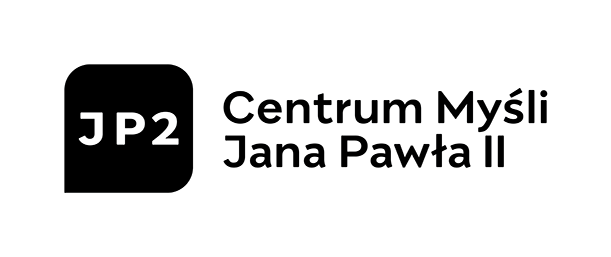

Project co-financed by: 

Patronage: 

Partners: 
